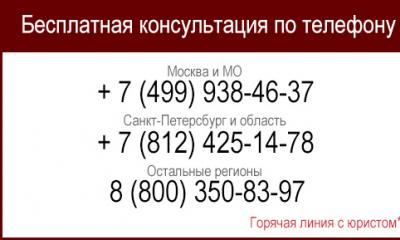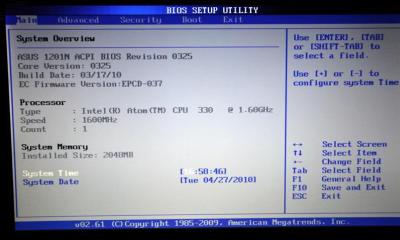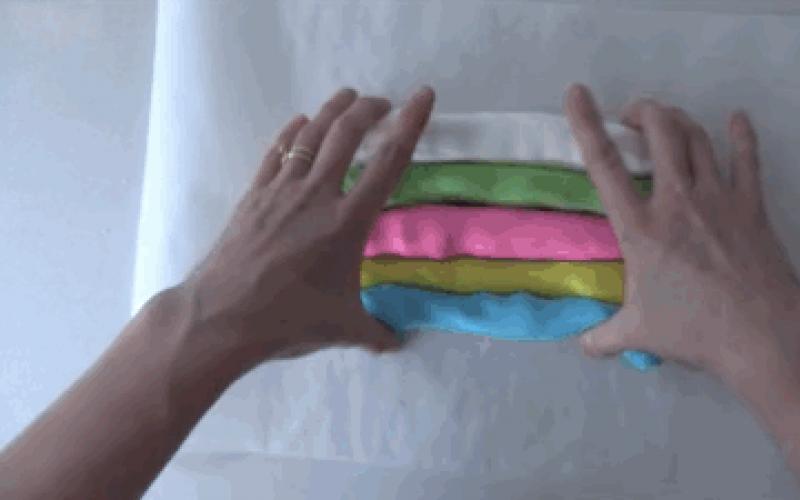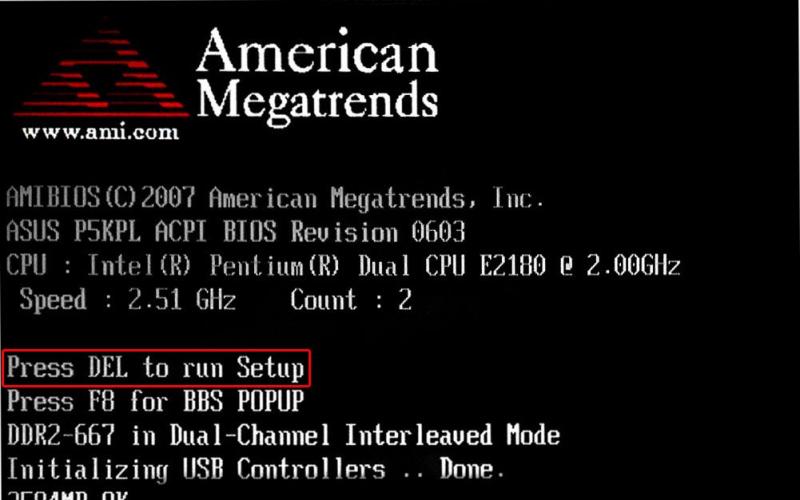Usually, Jack Russell Terriers will handle the birth on their own, but you should never leave your pet alone at this moment. After all, at any time you may need your help. Moreover, you must monitor her physical and psychological state, not only during childbirth, but throughout the pregnancy. You also need to prepare for the pre- and postpartum period. About what you need to know in order to properly deliver a Jack Russell Terrier, we will tell in this article.
After a successful jack russell terrier bitch pregnancy occurs. Average duration a dog's pregnancy is sixty days. The entire period of gestation can be divided into four phases:
- twenty-one days after mating;
- fourth week;
- fifth-seventh week;
- eighth week.
In the first phase, the pet has no visible changes either physically or psychologically. Leave the diet unchanged. You also need to add preparations with vitamins A, D and E to it at the dosage indicated in the instructions for use. During the entire pregnancy, give the female Jack Russell Terrier "Undevit" one tablet once a day and "Ferrum Lek" half a tablet a day.
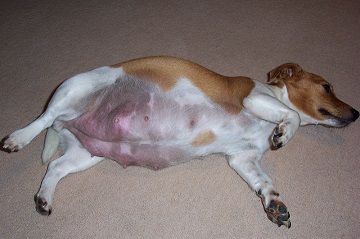
In the second phase of pregnancy, the dog begins toxicosis, due to which she may refuse, preferring water. You can't force your pet to eat.
At this time, thick, colorless secretions may appear. If blood appears in them, you need to give the dog a five percent solution of calcium chloride for three to four days - half a teaspoon twice a day.
In the third phase of pregnancy, long quiet walks in secluded places are recommended, where there will be no unnecessary irritants in the form of other dogs or excessive noise. If you live in an apartment building, don't let the Jack Russell Terrier bitch walk up the stairs herself, either in the elevator or in her arms. If the pet has an appetite, then be sure to increase the amount of food, but divide it into three or four meals. Keep giving vitamins.
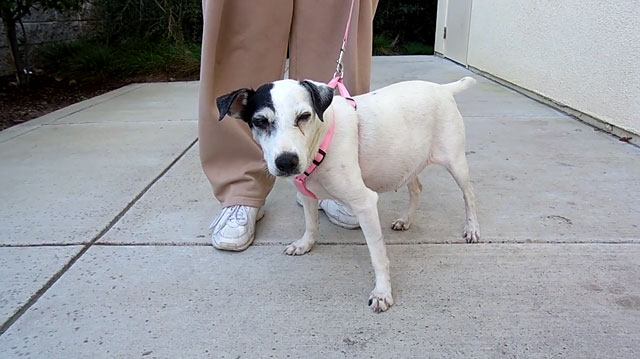
In the third phase, noticeable movements of the fetuses in the womb of the bitch begin. You need to reduce the amount of meat and meat broths, and a couple of days before the possible day of childbirth, you need to replace meat with cottage cheese, cheese. It will be possible to give meat again three to four days after birth.
Site preparation
You need to prepare a place for delivery in advance, two weeks in advance. For this purpose, choose a room where the female Jack Russell Terrier will not be distracted by extraneous noises and strangers. If the room has a window, it is best to hang it so that direct sunlight does not interfere with the dog. Also, clear the area of all unnecessary items so that you can quickly get to the bitch when she goes into labor.
Place a birthing box in the selected room. It can be purchased at a specialized store or made by yourself. The main thing is that it fits the Jack Russell Terrier in size - the pet should be able to freely stretch out to its full height. The box where the birth will take place must always be in perfect condition. Change bedding or diapers when soiled.

When the room is completely ready, start bringing the dog there daily so that he has time to get used to the maternity box. Otherwise, the female Jack Russell Terrier may start giving birth in a place that is inconvenient for you and for her.
Do not forget to disinfect and ventilate the selected room in advance. During childbirth, this should not be done - the dog may become ill or have an allergic reaction to cleaning chemicals.
Preparing the necessary items
Before giving birth, you need to prepare the necessary items:
- a lot of clean rags;
- plenty of clean towels;
- antiseptic hand sanitizer, such as Strilium;
- heating pad;
- scissors with rounded tips for cutting the umbilical cord;
- silk threads for tying the umbilical cord;
- box for puppies;
- trash can for dirty rags;
- threads different colors to identify each puppy;
- thermometer;
- pen, notebook and scales to fix the necessary parameters of the puppies.
You also need to prepare some medicines to avoid inflammation or infection, and for possible resuscitation of the puppies:
- an antiseptic for sterilizing navels in puppies, for example, Xidikol;
- five percent glucose;
- syringes;
- anti-inflammatory agent, for example, "Traumeel";
- "Cordiamin" to stimulate the heart;
- an antibacterial agent, for example, ten percent synthomycin ointment;
- enema;
- no-shpa (ampoules).
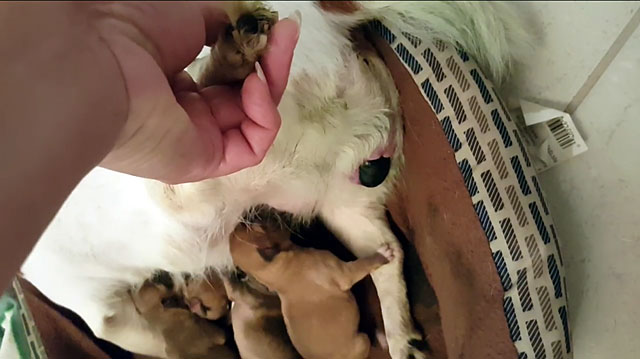
Be sure to notify your local veterinarian about the upcoming birth. If your bitch is giving birth for the first time, it is best to arrange in advance with the doctor about his presence so that he can help in difficult cases.
Also, before giving birth, prepare the bitch - cut off the hair around her genitals and nipples. The genitals themselves must be washed well with warm water and soap, after which the soap must be washed off. Then treat them with a solution of potassium permanganate. To prepare it, dilute a teaspoon of the powder in a liter of warm water.
Behavior and condition of the dog before childbirth
The approach of childbirth in a female Jack Russell Terrier can be determined by physical and psychological indications.
A week before the birth, the temperature begins to jump in the pet. The closer the birth, the lower it is. Three days before a possible birth, you need to measure the temperature of a female Jack Russell Terrier twice a day. Twelve hours before the start of labor, her temperature should drop to thirty-seven degrees.
In about four days, the pet's tummy begins to sink, its sides sag, and it becomes like a pear.

In three days, the dog begins to show excessive nervousness: restless sleep, follow you, whine, come to the prepared room and lie in the delivery box for a long time. Perhaps she will lose her appetite, although in some individuals, on the contrary, her appetite increases. The dog often asks to go outside or constantly goes to the toilet at home.
Twenty-four hours before giving birth, a dog will usually have white or gray discharge. And the movements of puppies in the womb stop. You should not worry, these symptoms, combined with a sharp drop in temperature, symbolize the early appearance of offspring.
If you notice that the discharge contains blood or it has become green, consult a doctor. These are the first symptoms of possible complications.

Be patient and attentive to the dog, she needs your support now more than ever. But if all the signs of childbirth are already there, and the process itself has not begun, even though more than a day has passed, urgently call the veterinarian. Most likely, something went wrong, and your pet, with puppies, is in great danger.
Beginning the process
Since contractions (contractions of the muscles of the uterus) usually last from twelve hours to a day, you may not immediately notice the onset of labor. Frequent heavy breathing of the dog is its harbinger.
After eight to ten hours, the intervals between contractions become shorter. This is reflected in the behavior of the dog - she begins to lower her tail, her eyes turn red, trembling covers the entire body of the bitch. She begins to intensively lick her genitals and look for a suitable position.
At this time, it is necessary to take the pet outside so that she has time to go to the toilet before the birth begins.
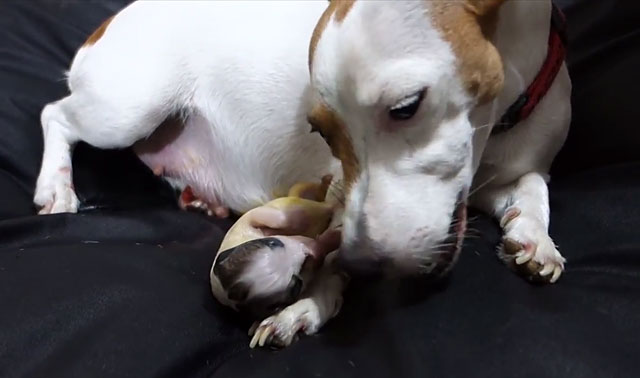
When the interval between contractions has decreased to ten to fifteen minutes, attempts begin - contractions of the dog's tummy muscles. The birth is about to begin. If more than three hours have passed since then, and the first puppy has not been born, call the veterinarian. Most likely, the bitch will have to do a caesarean section.
The puppy may appear either head first or paws first. Both options are perfectly acceptable. Usually, the bitch herself must break the amniotic sac in which the baby appears and gnaw through the umbilical cord. If the dog is too weak to do this, you will have to help him.
Tear open the shell around the puppy's head and free it from the bladder. After that, gently dry the puppy with a towel, remove mucus and liquid from his mouth and nose with a cloth. Then cut the umbilical cord. To do this, hold it with two fingers, step back three centimeters and cut it off with sterilized scissors. Tie the umbilical cord with silk thread and wipe the puppy's navel with Xidicol.
If the puppy is lethargic or shows no signs of life at all, then you need to suck the fluid out of the mouth and nose with an enema. Turn the baby upside down and lightly pat him on the back. After your actions, the baby should move. You can also do a light massage of the baby's chest to stimulate life.
After the birth of a puppy, a female Jack Russell Terrier leaves an afterbirth - a child's place. No need to throw it away, usually the dog eats it, as it contains useful substances.
Typically, a Jack Russell Terrier has four to five puppies. Accordingly, after each birth of the baby, the afterbirth should come out. But a dog cannot eat more than two pieces - an overdose of the substances contained in the afterbirth can lead to poisoning.
The interval between the appearance of puppies varies from fifteen minutes to two hours. If more than the due date has passed since the appearance of the puppy, and the Jack Russell Terrier bitch behaves calmly, then the birth is over. Remember to keep the maternity ward clean - change the bedding or diaper after each newborn.
Be sure to place the first two puppies near the mother so that they can begin to suck milk from her nipples. This has a good effect on childbirth - it stimulates contractions and attempts. It is also useful for puppies - with mother's milk they receive vitality and the first immunity against various infections.

The rest of the puppies are better to put in a pre-prepared box. Then, when the first babies have eaten well, put them in the box as well, and put new, still hungry puppies to the bitch. It will be possible to leave all puppies with their mother after the dog fully recovers.
There should be a heating pad in the box for the offspring so that the babies do not catch a cold, since their temperature drops very quickly after birth. From above, for additional warmth, they can be covered with a clean and warm towel.
Also, do not forget to keep the temperature in the room where the birth takes place at twenty-eight degrees. To do this, you can install a heater, but it should not be too close to the delivery box and the box with the puppies.
postpartum period
When the birth is over, you need to give the Jack Russell Terrier bitch warm tea with milk so that she can recuperate. Be sure to wipe the dog's genitals with synthomycin 10% ointment to prevent possible infection.
After forty minutes, you can walk the dog so that she can safely go to the toilet. But the walk should not be long, because the dog is still too weak. While you are outside with your pet, ask someone in the household to clean the maternity ward.
![]()
Cleaning in the box is carried out daily, for fourteen days. This is done not only for the comfort of the mother and her babies, but also to prevent them from contracting any infection.
For the first ten to fourteen days after giving birth, a Jack Russell Terrier bitch may have bloody discharge. Don't worry - this is a normal recovery process. Gradually they will stop. But if the selections have green color, and the pet has a fever, which means she has an inflammatory process. In this case, you need to see a doctor.
The first few days you should feed the dog with kefir or cottage cheese. Special prepared foods are also suitable. If your Jack Russell Terrier bitch has no or very little milk, consult your veterinarian. He will prescribe treatment to increase lactation. If the drugs do not help, then you will have to feed the puppies yourself with special milk, which can be purchased at a specialized store or veterinary pharmacy.
How was your dog's birth?
While three...
Tthese are: sufficient knowledge in this area, a large area for walking, a lot of time and love, purebred source material, marketability and a willingness to invest money that may have to be written off more than once at a loss, since the path to a profitable enterprise is long and thorny.
How to determine the mating day
PThe duration of estrus, in Jack Russell Terriers, depending on genetic characteristics, is 18, 21 or 28 days. To correctly determine the mating day, divide the number of estrus days by 3, and the result by 2 and add these two numbers (round up) - these are fertile days. For example: 18:3=6, 6:2=3, 3+6=9. Thus, mating should be carried out on day 9, control mating - every other day.
Atfive weeks after mating, you can determine if your bitch will have puppies. AtA pregnant bitch by this time obviously shows a tendency to rest, and her sides begin to round. Pregnancy lasts about 9 (nine) weeks, but depending on hereditary factors, breed, number of puppies, gestation periods can vary from 58 to 67 days.
Care of a puppy bitch
PThe pregnancy process in Jack Russell Terriers is divided into 4 periods:
I - period - three weeks after mating.
INduring this period, fertilized eggs practically do not increase. External signs pregnancy is not observed, the behavior of the bitch is normal, the appetite may increase slightly. We feed as usual, we give meat. Add vitamins to your diet
Undevit- (the whole pregnancy) 1 pea - 1 time per day.
Vitamin A- 1 drop - 1 time per day.
Vitamin D- 1 drop - 1 time per day
Vitamin E- 2 drops - 2 times a day
FROMFor 3 weeks, vitamin A is increased to 2 drops per day, D is not changed, and vitamin E is reduced to 2 drops per day.
II - period starts at 4 weeks.
FROM21 days there is a turn in the body of the dog. A period of toxicosis begins, the bitch often refuses food, drinks a lot, sometimes vomiting occurs. During this period, it is not necessary to force-feed the bitch. A thick, clear discharge may appear from the loop. When streaks of fresh blood appear in the mucus, give 0.5 tsp for 2.3 days. 5% solution of calcium chloride - 2 times a day.
III - period - 5 - 7 weeks.
FROM5 weeks again increases appetite. During this period, it is necessary to increase the number of walks (calm). Feeding can be slightly increased. We continue to give vitamins.
FROM6 and 7 weeks - increase the meat diet. Feeding, if possible, is best divided into 3 times a day. We continue our leisurely walks. During walks, do not allow skirmishes with other dogs, it is advisable to ride in the elevator both up and down, and not walk up the stairs (to avoid torsion of the uterine horns).
IV - period- 8 weeks.
Hbeginning of fruit movement. Continue walking and feeding. Reduce the meat ration, remove meat broths. 1-2 days before childbirth (and 2-3 days after childbirth), do not give meat at all, replace it with cottage cheese and cheese.
INduring this pregnancy, give half a tablet of any glandular preparation daily, for example ferrum lek, ferroplex, etc.
whelping
Hjust before whelping, the bitch starts to worry, rush about, dig in corners, under the table, etc. often asked to go for a walk. Prepare a place for childbirth - convenient and accessible for helping the dog. Be with her all the time. Prepare small clean rags and a lot, the bluntest scissors, a large cardboard box with low sides, on the bottom of which put a flannel rag. Prepare a checkered notebook, colored, thick, woolen threads.
FROMfrom the moment the waters break before the onset of labor, a gap of 2 hours, let's say, a longer gap is already a pathology - urgently call the veterinarian.
INIn general, you need to keep in touch with your friend a good veterinarian all the time, find out in advance whether he will be able to arrive promptly on the days of the alleged whelping, after the waters break, call him.
HDo not allow a bitch to give birth standing up because the puppy may be injured and the umbilical cord may be cut too short. If the puppy came out in a bubble (children's place) - quickly burst the bubble in the head area, remove it, wipe the muzzle so that it takes its first breath faster. If the puppy does not immediately breathe - suck the mucus from the mouth and nose with a small pear, rub the puppy, hold it upside down, pat it lightly, try to artificially restore breathing.
Umbilical cord - usually the bitch grinds the umbilical cord herself, if she does not rub the umbilical cord with your fingers, then cut it off with scissors at a distance of 3-4 cm from the tummy (after a couple of days it will dry and fall off), no need to tie.
afterbirth(children's place)- be sure to count how many puppies, so many afterbirths should be. Delayed placenta can lead to very serious complications!!! Let the bitch eat no more than 2-3 afterbirths, the rest should be thrown away. When eaten more afterbirth poisoning is possible. It is also not advisable not to give afterbirths at all, because. they contain a large number of enzymes and hormones that promote the formation of milk.
puppies born put to the nipples - the act of sucking contributes to the activation of further childbirth. A good contraction of the uterus, but when the bitch begins to worry and give birth to another puppy, put the rest in the box so as not to interfere with the birth and not cripple the puppies.
TOEach born puppy must be carefully examined, the sex determined, a colored thread tied around the neck and written down in a notebook. Make several columns, time of birth, gender, thread color, front or back came out, etc. Then you will continue this tablet by entering the nickname, the number of the brand, who opened their eyes when, when the teeth erupted, how they gain weight, etc. etc.
PThe first 3 days you need to feed the puppies every 2 hours (and at night too). Gradually, we increase the intervals between feedings to 3 hours, a little more at night. Watch the weight and development of puppies, weaker and smaller ones should be placed on the rear nipples - they are more milky and the composition of milk in them is more saturated. In the intervals between feedings, puppies should be put in a box or a special box. It is not necessary to leave puppies under the bitch because, firstly, they can be crushed and maimed, and secondly, the bitch will not develop a frequency of milk arrival.
INduring childbirth, let the bitch drink weak tea with milk and a drop of honey. Whole milk is not required.
INdischarge from the loop continues up to two weeks after birth, gradually decreasing and turning pale. You can give the bitch an infusion of water pepper or yarrow. The first three days after childbirth - do not give meat and meat broths! Often the female does not eat well after giving birth - she should not be force-fed. From the 3rd day after birth, switch to a normal diet.
FROM23 days - begin to limit the diet in drink and liquid food - it's time to prepare the bitch for reducing lactation and distributing puppies.
ANDdo not forget to periodically trim the claws on the front paws of the puppies.
Feeding puppies during the lactation period
Up to 10 days- period of prematurity.
FThe enzymatic system is not yet turned on, there is no thermoregulation. With a normal amount of milk in a bitch and a good weight gain, puppies do not need to be fed. If there is not enough milk or there are more than six puppies, we make milk supplements:
0.5 l. milk 3.2%, 200 ml. 20% cream, 1 raw yolk, 1 tsp. honey, 5-8 drops lemon juice, 1 tablet of Glycerophosphate, 1 tablet of Phytin (thoroughly crush and dissolve), 2 drops of D-type and 1 drop of vitamin A. Do not boil!
10-23 day- the second period of development of the puppy.
FROM10-13 the enzymatic system begins to work. On the 16th-18th day, a rumor appears. From 15-16 days you can start complementary foods minced meat, cottage cheese, give porridge or soaked dry food.
Cottage cheese do homemade.
1 l. Pour milk and 0.5 l of kefir into a saucepan and bring to a boil, put on a sieve and decant. Spoon feed.
Kashi - oatmeal, oatmeal (ground), buckwheat, boil liquid in milk. " Children food' is not desirable.
FROMFor 15 days, gradually add carrot or apple juice drop by drop to any complementary foods, later grated carrots and apples must be added to food.
23-30 day - the third period of development of the puppy.
TOOn the 23rd day, the dental system appears. Food should be diversified, adding to the broth, vegetables, pieces of boiled meat from borscht and soups. Kashi can be cooked thicker. Carrots must be given both raw and boiled. It is useful to add an egg (whole), raw at the rate of 1 egg per 6 puppies per day to food. You can add honey to porridge and cottage cheese.
Males and females that have reached breeding maturity are allowed for breeding.
PLena maturity occurs after the completion of physiological development. Males are capable of reproduction already at 9 - 12 months, and females even at 7 - 10, that is, much earlier than physical development ends. In the breeding rules for pedigree dogs, Jack Russell matings are recommended during the 3rd estrus period. It must be borne in mind that dogs should be bred during spring estrus, and not in autumn, since having a litter in the spring is more in line with the nature of the animal.
HIn order for a dog to be entered in the stud book, it must meet all the requirements of the breed standard. Jack Russell Terriers that deviate greatly from the breed standard, have defects in the exterior, bad behavior, are considered unsuitable for breeding use and therefore are not entered in the stud book.
It is not true that the natural instincts of reproduction play a big role during mating of breeding animals. In most cases, the bitch is brought to knit to an unfamiliar dog, therefore, most often the dogs behave aggressively, growl and sit down when the male tries to make a cage.
Hand knitting of the Jack Russell Terrier is practiced when both dogs are on leashes.
Jack Russell males - very temperamental and active, sexual instinct and the presence of a female in heat have a strong effect on them. An experienced male Jack or Parson Russell Terrier, who is regularly used for mating, pays little attention to the aggression of the bitch. But such behavior can frighten a young male, so for the first few matings it is desirable invite a professional instructor. The instructor's services are paid by agreement, as much as the professional requests, but most often this responsibility falls on the owner of the bitch.
Before mating, the bitch is taken on a leash, with the help of a collar, fixing her in one position, preventing her from turning around to the male. After that, the dog is brought in, encouraging to mount the bitch. When there is penetration into the vagina of the bitch, the male ejaculates. The duration of ejaculation does not exceed a minute, then the dogs stand “in the castle” for about half an hour. It is wrong to think that the absence of a lock is a sign of unsuccessful knitting. The main part of the spermatozoa is ejected during frictions.
The common practice of mating a Jecrassel dog is carrying out control or re-knitting. This is necessary in order to guess the time of ovulation as much as possible.
Important! Repeated mating is carried out a day after the first.
Pregnancy and childbirth in Jack Russell Terriers
Pregnancy
 If the mating was successful, then fertilization of the eggs occurs. A Jack Russell bitch's pregnancy lasts about sixty days, but the first signs of pregnancy become visible. only after the first month puppies. The first signs of pregnancy are:
If the mating was successful, then fertilization of the eggs occurs. A Jack Russell bitch's pregnancy lasts about sixty days, but the first signs of pregnancy become visible. only after the first month puppies. The first signs of pregnancy are:
- Swelling of the nipples. Noticeably already by the third week of pregnancy.
- Increased volume in the ribs. The dog in the sitting position seems to be more well-fed.
- Changing the behavior of the bitch. She becomes calm, in the first weeks there may be no appetite, she becomes affectionate, obsessive.
- By the fifth week of pregnancy, the bitch is already clearly belly visible, the beds of the mammary glands swell and increase.
From the time the first signs of pregnancy appear, the dog is given additional feeding, they stop taking it for training and limit it. physical exercise as far as the temperament of the dog allows.
childbirth
The Jack Russell Terrier is a strong and healthy dog breed with normal body proportions. Therefore bitches of this breed give birth to puppies easily, and the help of a doctor during childbirth is usually not needed. But the owner must be prepared for any complications and agree in advance with the veterinarian about a possible visit.
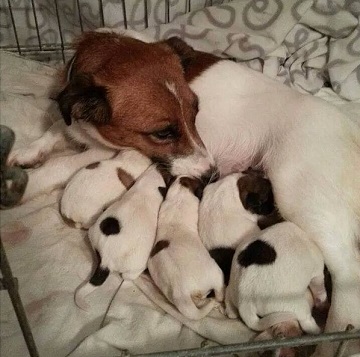 Labor activity begins with regular uterine contractions, which can be determined by placing a hand on the dog's stomach. The tense wall of the uterus does not allow probing the puppies.
Labor activity begins with regular uterine contractions, which can be determined by placing a hand on the dog's stomach. The tense wall of the uterus does not allow probing the puppies.
The first sign of imminent labor there is a discharge of a mucous plug containing a small amount of blood. If the cork has moved away, then in the next few hours the bitch will begin to give birth.
As a rule, the bitch, feeling the contractions of the uterus, begins to behave restlessly, she may shiver, she is looking for a secluded place. These are normal body reactions. The dog is arranged in a pre-prepared place, it is advisable not to leave it alone for a long time. For support, you can give a slice of chocolate, encourage the animal.
When the puppy is in the birth canal, the bitch begins to push. She pushes the puppy out, pushing, and at the same time it is imperative to observe the process of childbirth. If the head or paws appear, you do not need to pull on them, at the next fight the puppy will be born. Young females often do not experience maternal instinct, relying on the help of the owner, so as soon as the baby is born, they do the following:
- Break or cut the membrane of the amniotic sac to let the puppy take its first breath.
- After this newborn wipe with a towel, slightly shaking it by the withers. They offer the bitch to lick the baby.
- If the mother does not cut the umbilical cord, it is cut off at a distance of three to five centimeters from the baby's belly. Bandage the umbilical cord only if the vessel bleeds heavily.
- Thereafter the puppy is placed on the nipple.
The bitch, during manipulations with the baby, most often puts herself in order, eats the afterbirth. When the next attempts begin, it is advisable to take the newborn to another room, placing it in a warm basket or box with a soft cloth. Puppies are brought back after the end of childbirth, when the wet litter is removed.
Sterilization of the Jack Russell Terrier breed
If the owner of a Jack Russell Terrier bitch does not plan to breed his dog, then it can be spayed. This operation eliminates estrus and the possibility of getting pregnant, the plus is that the pet is always in excellent shape.
Important! Most veterinarians recommend carry out scheduled sterilization after the first estrus.
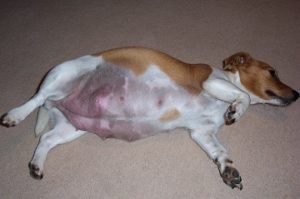 The operation is also performed for medical reasons, in case of suppuration of the uterus or pyometra. This disease most often begins a couple of weeks after estrus and is associated with penetration into the uterine cavity during estrus of pathogenic bacteria.
The operation is also performed for medical reasons, in case of suppuration of the uterus or pyometra. This disease most often begins a couple of weeks after estrus and is associated with penetration into the uterine cavity during estrus of pathogenic bacteria.
The sterilization operation is performed under general anesthesia, takes about an hour, after which the bitch must be in a mode that excludes sudden movements and physical activity for at least two weeks. The dog is given a course of antibiotics.
Jack Russell Terrier considered a healthy dog breed. Jack Russell bitches usually tolerate the natural periods of estrus and whelping for the animal, and have a well-developed maternal instinct. But sometimes the increased emotional lability of the females of this breed leads to overreaction, nervousness and stress in response to changes in the physical state of the body.
Useful video
On the video you can watch a short video about the birth of a Jack Russell Terrier:
Prevention of behavioral disorders is complete trust between the owner and the animal.
Somatic disorders in the hormonal background, the health of the reproductive organs are rare, but require immediate consultation with a veterinarian.
L. Trifonova, obstetrician-practitioner
Currently, veterinary obstetrics, gynecology and biotechnology have become an important scientific and practical discipline. Its formation is greatly influenced by achievements in the field of many other disciplines, such as physiology, endocrinology, immunology, surgery, pharmacology, etc. However, there are enough blank spots in which veterinarians and research institutes should conduct research. I want to touch on the practical problems of breeders or ordinary dog owners who find themselves in a difficult situation - an independent choice. right decision in planning to obtain full-fledged offspring from your dog (female).
Genital organs of a dog (female). The genital gap (loop) in bitches is low, so the perineum (the area from the anus to the loop) is quite long. The vagina, depending on the breed and anatomical features, is from 3 to 14 cm. A rather powerful circular layer functions in the anterior part of the muscular membrane, which spasms under mechanical action (the insertion of the obstetrician's hand, instruments, etc.), this anatomical feature seen in dogs called pseudocervix (false cervix). The cervix itself is short 0.7-3 cm (depending on the breed and anatomy), thick, dense, in the open state it has the shape of a tube, from the side of the vagina the cervix is provided with a muscular layer that forms a closing ring. FROM reverse side the cervix passes into the body of the uterus of small sizes, which in turn enters into two horns, merging for 0.3-2 cm, then diverging in the form of thin tubes up to 3-4 lumbar vertebrae long. The horns of the uterus are attached to the spine with wide uterine ligaments, additionally fixed by two uterine ligaments fixed in the region of the internal inguinal ring, the ligaments themselves contain abundant fatty deposits, especially uterine. The ovaries are located under 3-4 lumbar vertebrae, have the shape of an elongated oval 0.8-2.5 cm long, surrounded by mesenteric folds and fatty deposits.
Sexual and physiological maturity. The first estrus is the signal for the onset of puberty. small breeds at 5.5-12 months, for large ones at 7-16 months, but this does not indicate the onset of physiological maturation. By the time of the first estrus, the animal, as a rule, gains no more than 70-80% of its absolute weight in the future, although it is already capable of conceiving and bearing offspring. Often during this period, pathologies (dysfunctions, endometrial hyperplasia, etc.) are detected, which allows the owner to diagnose and examine his bitch. At physiological maturity, a stable cycle of estrus (pustovki) is established, the dog gains its 100% weight, begins to show innate reflexes (hunting for mating during estrus, maternal instinct, etc.). The hereditary factor is of great importance, so you should (if possible) ask the breeder for information on this issue about the mother of your dog. It is also very important proper cultivation, maintenance, feeding, physical form of the bitch. It is necessary to find out the prescriptions of the club where your dog is enrolled. in different organizations, the rules for admission to breeding often differ. There is a strong opinion that it is better to carry out the first mating on the third estrus, but no later than the age of 4 years, because. in the future, there is a partial loss of elasticity of the tissues of the genital apparatus.
Knitting (mating dogs). In each particular female, the intervals between estrus are normally constant: in small breeds of dogs 4-8 months, in large breeds 4-12 months. The minimum interval is three months and corresponds to the maturation of the corpus luteum. The cycle is divided into four phases: proestrus, oestrus (= estrus), metestrus and anestrus, all of which are well known to those skilled in the art and described in detail in many veterinary publications. My task is to help novice breeders or owners who have no experience in this matter at all. Usually estrus lasts 17-24 days (average 21 days). In the initial stage (1-10 days) bloody issues are not transparent bright red, a drop that has fallen on the floor has smooth edges, dries quickly. The perineum is strongly swollen, the loop looks like a rubber ring, strongly swollen to the touch. At the stage of ovulation of the ability to fertilize (8-13 days) - the discharge brightens (the color of the juice of thawed meat), acquires a pungent smell (not fresh fish), a drop that has fallen on the floor looks like a sun (the edges have rays). During this period, the bitch shows an active interest in the urine marks left by the males and whines when meeting them, willingly takes her tail aside and pulls the loop up when stroking her back. The loop softens to the touch, puffiness disappears, the skin of the loop looks like a baked apple, outwardly the loop resembles a transverse boat. If you take the selection on your finger and rub your fingers together, you will see that they have a slimy consistency. If the above signs coincide, the dog can be considered ready for mating, which is carried out twice (the first mating and a second, control, mating a day later). It is customary to mate at the dog's home (in extreme cases, in any clean room). Normally, dogs mate on their own - the male mounts on the female and when it enters the vagina, a gluing (lock) occurs, in which the swollen genitals of the male are held in the female's vagina by two transverse muscles, while the dogs turn back to each other. The duration of bonding can last from 15 minutes to 1.5 hours. Sometimes, due to inexperience, youth, individual physiological reasons, dogs cannot mate on their own, in this case a mating instructor is invited. In the last stage of estrus, the discharge becomes scarce and gradually disappears. Sometimes in the last days, dark cherry discharge may appear, as a rule, no more than 1-3 days. During estrus, I recommend keeping the bitch on a leash, because. natural instincts interfere with obedience.
Planned knitting. Novice dog breeders should contact specialists for the correct selection of a pair for their bitch, because. the beautiful appearance of a male that has attracted somewhere (a neighbor in the yard, an exhibition, etc.) does not guarantee pedigree, healthy offspring. The cynologist specialist has the necessary information in this case about the hereditary (genetic) pluses and minuses of both breeders: the risk of large pregnancies, infection of the genital organs of the bitch, hereditary diseases in puppies is reduced. With planned mating, inexperienced breeders will not be out of place to conduct a laboratory study of a vaginal smear to determine the optimal time for mating (vaginal cytological diagnosis).
Random knitting. Prevention of unwanted pregnancies in dogs that are accidentally mated is one of the most difficult problems in veterinary gynecology. There are several ways: the introduction of estrogens in the first days of conception, the provocation of abortion (miscarriage) with prostaglandin not earlier than 35 days, the surgical method is the removal of the ovaries and the pregnant uterus no later than 40 days (if you do not plan further breeding use of the bitch). However, it should be noted that the introduction of hormonal (steroids) drugs, according to many studies, often leads to serious complications (metropathia, pyometra, etc.). Surgery can also have postoperative complications (postoperative bleeding, formation of keloid scars, adhesions in the pelvic organs, etc.). Therefore, most often this method is resorted to as a last resort - when mating dogs of different breeds or mestizos of unknown origin, which can lead to large fetuses and the impossibility of normal childbirth. If a large fetus is suspected, an ultrasound examination should be performed to confirm the diagnosis. Attention should be paid to a possible infectious infection if the male mated with the female is homeless, and a vaginal smear should be submitted to the laboratory (bacteriological diagnosis). If there is no urgent need for surgery, then natural childbirth is considered the optimal solution to the situation in case of accidental conception.
Pregnancy (schennost). On average, pregnancy lasts 62-64 days, but depending on hereditary factors, breed, number of puppies, the timing of pregnancy may shift. At in large numbers puppies (for small breeds - 4-8 shch.; for large breeds - 9-14 shch.), the gestation period may decrease. Experience shows that viable puppies can be born as early as day 57. Accordingly, with a small amount (1-2 s.), the period can last up to 65-68 days, which leads to large fruiting, which is especially dangerous for small breeds. In this case, if there is a suspicion of large fetuses, an ultrasound examination should be performed. Unfortunately, large pregnancies often lead to surgery (caesarean section). Until the 35th day, only a specialist can visually determine pregnancy, but in this case there is no urgent need for this, during this period, the bitch does not yet require special care and often continues to perform her job duties (hunting, guarding, etc.). However, there are some signs by which pregnancy can be "suspected" up to day 35: on days 20-23, nausea or vomiting, loss of appetite, on days 20-26 - discharge from the loop in the form of viscous transparent mucus. From day 35, the bitch's nipples turn pink and swell. An experienced specialist can already determine the presence of fetuses by palpation or ultrasound examination. Another way to help determine pregnancy is to measure. chest behind the elbows of the dog, also measure the belly in the groin area (at the time of the second control mating), if after 35 days the second indicator exceeds the first indicator - this serves as additional confirmation of pregnancy. From day 35, it is necessary to more carefully draw up a diet for a pregnant bitch. If you are on a natural food diet, then you should increase the amount of protein foods and reduce the intake of carbohydrates, which lead to the formation of fluffy fat (fullness). A fat dog is less likely to give birth without assistance. Dogs with a dry type of constitution require more high-calorie food, especially representatives of small breeds. During pregnancy, the diet should be increased and a third (daily) feeding should be added. It is better and more correct to feed the dog during this period with specially existing dry food, because. it is very difficult or, to be honest, almost impossible to make a competent diet from natural products on your own. I recommend that you consult with a specialist from your club about a personally suitable food for your pregnant bitch. If, nevertheless, you prefer natural nutrition (meat, cottage cheese, eggs, poultry, fish), remember the danger of poisoning and bacterial infection. Purchase only high-quality products and be sure to heat treat them. When self-compiling a diet for a pregnant dog, additional feeding with vitamins and minerals (specially designed for pregnant dogs) will be required. Vegetables (fiber) should be seasoned with a small amount vegetable oil, in the last two weeks of pregnancy, they should generally be excluded from the diet, tk. the presence of fiber in food leads to flatulence (gas formation) and can cause intestinal colic, which can provoke an increased tone of the pregnant uterus. It is necessary to limit the amount of fatty foods that adversely affect the liver. Monitor the physical condition of your dog, it should not be excessively thick or thin, the subcutaneous layer should not exceed 1.5 cm in large dogs and 0.6 cm in small dogs, the muscular relief should be visible in a pregnant bitch. Walks up to the 35th day of pregnancy can be long and take place as usual. After 35 days, the bitch herself begins to take care of herself, moves more slowly, so try to walk away from other dogs, limit outdoor games (stick, balls, etc.), protect the dog from sudden movements. For the last two weeks, try to keep your dog on a leash to avoid unforeseen stresses and dangers. During this period, long walking walks are recommended, at least 3, 4 times a day. 2-3 days before the birth, walks are limited to 10-20 minutes, 4-5 times a day. Try not to go far from home, this can unnerve the dog and put you in the difficult situation of a sudden onset of labor. Approximately 10-12 days before birth, you can feel the puppies moving by putting your hand in the groin area when the bitch lies on her side at rest. However, this should not be abused: inept stroking or pressing on the stomach can lead to serious complications (damage, placental rejection, etc.). During these periods, the first drops of colostrum (milk) appear: translucent, yellowish in color. Sometimes mating can be empty, in the case when the owner incorrectly determined the beginning of estrus or the day of mating (missed ovulation). In some cases, there may be physiological reasons that prevent the onset of pregnancy and require the intervention of a specialist. It is worth deciding in time whether you will take birth yourself or resort to the help of an obstetrician. An urgent need for specialist help may arise in case of complications (wrong position of the fetus, dead puppy, lack of labor, etc.).
Childbirth (norm and pathology). The birth process can be divided into two periods: prenatal (contractions) and actual childbirth. The beginning of the prenatal period can be recognized by a decrease in temperature by an average of 1.5 ° C (at a rate of 38.6 ° C), that is, 38.8-37.2 ° C. Usually the prenatal period lasts 10-24 hours. In some cases (in easily excitable or injured dogs), contractions can last less than 10 hours (briefly), which most often leads to complications. Contractions for more than 24 hours also indicate the presence of pathology and require the intervention of a specialist, because. due to prolonged stress, the dog loses calories, the water-electrolyte balance is disturbed, which leads to a violation of the metabolism of mineral substances and is often complicated by eclampsia (convulsions of pregnant women). The approach of childbirth can be determined by the following signs:
- 3-6 days before delivery, temperature jumps (from 38.6 ° C to 37.9 ° C; from 37.8 ° C to 38.4 ° C within one day), the closer the birth, the lower the temperature ( from 38.6°C to 37.4°C - 12 days before delivery);
- 3-4 days before the birth, the stomach drops, i.e. the back looks thin from above, depressions appear in the groin, the rear view of the dog resembles a “light bulb” or “pear”;
- for 2-3 days the dog may not sleep well;
- for 2-3 days the dog may often ask for a walk or even defecate at home.
The onset of contractions can be determined by the following signs:
- lowering the temperature to 36.8-37.2 ° C (before childbirth 12-24 hours);
- the dog begins to worry, breathe often, clog up in dark corners, lying in one place often changes positions.
Sometimes dogs refuse food (depending on the breed and character) in about a day, but this is not typical for everyone. There may be vomiting, hiccups. Depending on the character and temperament, the bitch may try to retire or, conversely, demand increased attention from the owner. At the time of the fight, the dog experiences sharp pain, therefore, it seems that she is looking at one point, focusing on her internal state, she can look back at her tail, grunt, moan. As mentioned above, the phase of contractions lasts 12-24 hours, so the first 5-8 hours of contractions are hardly noticeable, the intervals between them are large. An inexperienced owner should carefully monitor the dog and pay attention to the following symptoms: gradually, as the intervals between contractions decrease, the dog’s tail drops, the eyes turn red, the front and hind limbs (sometimes the whole body) begin to tremble, the abdominal muscles are in good shape (“ the effect of a stone belly"), when walking the bitch strains her hind limbs "wooden gait"), hunches her back, often licks the noose and mammary glands, in the supine position the dog tosses from side to side (as if looking for a comfortable position), "kicks" with her hind limbs as if wanting to drive away the pain. A transparent grayish mucous discharge (mucus plug) appears. If the dog has watery liquid discharge bloody or green in color, you need to urgently see a specialist, these symptoms indicate serious complications. 2-3 hours before birth, the body temperature usually rises to 37.8-38.0 ° C, the dog is extremely excited, digs, often asks to go outside, can tear the litter, tries to retire in the place chosen by her, actively licks herself. The need for frequent walks is due to the desire of the bitch to completely empty the intestines and bladder, which is necessary for a normal birth process. Try to walk your dog early stage contractions so that childbirth does not catch her in unsanitary conditions (in the stairwell, in the elevator, on the street). This is most likely to happen with a young primeval bitch. It is very dangerous for the giving birth bitch and newborn puppies, and threatens with injuries, infection. Reducing the intervals between contractions to 10-15 minutes means that the phase of labor is approaching. Gradually, frequent contractions turn into attempts, while the position of the bitch can be different: standing, sitting (placing her paws on one side) or lying down (more often in large breeds). At the same time, the tail of the dog is characteristically laid back, forming, as it were, a crescent shape, with the tip down. From the moment of birth, the first puppy should appear no later than 3 hours. If the interval is longer, then you should immediately consult a veterinarian. The puppy is located in two bubbles: water and fetal. First, a water bubble is shown, which itself can burst in the birth canal or it is torn by a bitch. Shortly thereafter, the first puppy appears. Through the birth canal, the puppy can go forward with his head or hind limbs - both positions are the norm. In the head-first position, the puppy's paws are located under the chin, the head comes out with the muzzle forward. When positioned with the hind limbs forward, the legs and tail appear from the loop. When a water bladder ruptures in the birth canal, grayish amniotic fluid flows out of the loop. Normally, within 20-60 minutes, the first puppy usually appears. So the puppy was born. You should immediately break the shell. The easiest way is to grab it under the puppy's chin and remove it like a stocking. Free the mouth and nose of the puppy from mucus with a cotton cloth, knitted cotton fabric, washed or boiled many times (cotton T-shirt), cut into napkins (40x40 cm for large breeds and 20x20 cm for small breeds) is best suited for this purpose. If the puppy came out with an afterbirth, cut the umbilical cord (at least 3 cm away from the puppy's tummy in small breeds, at least 5 cm in large breeds), use very blunt scissors (teeth biting effect). Then, using two fingers, gently move the fluid toward the umbilical cord from the puppy's tummy to the edge of the cut. If the umbilical cord is bleeding, squeeze the cut edge of the umbilical cord and hold for 20-30 seconds. You can treat the cut edge with hydrogen peroxide, brilliant green or potassium permanganate (potassium permanganate, diluted to the color of ripe cherries). If even after this the umbilical cord bleeds, tie it with silk or nylon thread (no closer than 1 cm from the puppy's tummy), but resort to this method (tying the umbilical cord) only as a last resort. often this results in a buildup of fluid that prevents the umbilical ring from closing, usually resulting in an umbilical hernia. In the case when the puppy came out, and the placenta (children's place) remained in the uterus, try to pull it out with even, smooth movements, taking into account the attempts of the bitch (it is convenient to hold the umbilical cord with a piece of gauze). The umbilical cord can break off in the birth canal, then the puppy will come out without an amniotic membrane, or with a membrane, but without an afterbirth. Make sure that too short an umbilical cord does not bleed. Dry the puppy with a cotton swaddle (a waffle towel works best). Sometimes a puppy lingers in the birth canal for a long time without an amniotic membrane - this leads to asphyxia (impaired breathing and oxygen starvation). Try restoring your breath by vigorously rubbing your chest with a rough cloth (waffle towel). There is another way (as a last resort) when the owner can suck amniotic fluid by mouth from the respiratory tract of a newborn puppy. But remember that this manipulation should be done with extreme caution, given the minimum lung capacity of a newborn puppy. In some cases, to revive the puppy, a heart preparation is used - cordiamine (in ampoules, no more than 1-3 drops on the puppy's tongue, depending on the breed). Sometimes a good effect for resuscitation of a puppy is given by dousing with warm water (45-50 ° C for 2-3 seconds). Keep a close eye on the bitch while handling the umbilical cord. there have been cases when the bitch bit the umbilical cord too close to the umbilical ring, which leads to the formation of an open hernia and the death of the puppy. With large fetuses or weak labor activity, the puppy can get stuck in the birth canal of the bitch: when trying, the muzzle or hind legs are shown, when relaxing, the attempts go back. In this case, try to hold the part of the body that has appeared, and with the next attempt, try to gently and smoothly pull it to the exit from the loop. However, do not forget about possible birth injuries, so force is not needed here. On average, normal intervals between puppy exits are 30-40 minutes, so if the dog pushes to no avail for more than three hours, be sure to contact a specialist. In bitches during childbirth, there are primary and secondary generic weaknesses. Some bitches are genetically (hereditarily) predisposed to primary birth weakness. Secondary birth weakness occurs during multiple, protracted births, when the walls of the uterus are strongly stretched, the muscles partially lose their contractility, the dog strains for a long time, overworks. If there are difficulties at the birth of the first puppy, it is better to call a veterinarian (obstetrician). The use of stimulants or other drugs without special knowledge or consultation with a specialist is unacceptable, as it can lead to uterine rupture or cervical spasm, which will require surgical intervention. An example of a normal birth in large breeds (pregnancy with eight puppies): the first puppy - 1 hour after the start of labor; the second after 40 minutes; the third - after 35 minutes; the fourth - in 30 minutes; fifth - after 1 hour 20 minutes; sixth - after 45 minutes; seventh - after 50 minutes; eighth - after 1 hour 10 minutes; those. from the release of the first puppy to the eighth approximately seven hours pass. In a hopeless situation, when there is no way to contact a specialist, the intervals between puppies exceed two hours, labor activity is sluggish and there is a threat of losing puppies, stimulants can be used, but only after the release of the pregnant uterus by at least 30% (for example, at 9-10 puppies after 3-4 puppies). The activity of the stimulating drug: 1 ml = 5 units (1 ampoule is designed for approximately 50-60 kg of body weight). For large breeds, a single dose of 2-2.5 units (0.4-0.5 ml), for small breeds of dogs (0.1-0.15 ml, subcutaneously). An overdose of stimulant drugs can have side effects and therefore should be handled with extreme care. When overdosed, stimulant drugs cause strong contractions of the uterus, for about 30-40 minutes, which further leads to some atony (relaxation of the uterus) and an increase in the duration of the birth process (possible partial loss of puppies). In view of the above data, try to use stimulants in as small doses as possible and as late as possible. Keep in mind that once you apply the stimulant, you will be forced to make repeated injections throughout the entire birth. The stimulator is useless if the bitch has been pushing for three or more hours without success. This indicates an incorrect presentation (position) of the puppy, or its large size, which requires the immediate intervention of a specialist. During normal childbirth, 50-100 ml of amniotic fluid comes out with each puppy in large breeds, in small breeds 15-50 ml. There is 1 placenta for each puppy, but occasionally there are identical twins, then one placenta will have two umbilical cords. I advise you to keep all afterbirths until the end of childbirth (in cold water, in a container with a lid), so that the bitch does not have access to them. If there were fewer afterbirths than puppies born, carefully examine them: perhaps there were identical twins in the litter. If one afterbirth or several afterbirths linger in the uterus, this causes a green discharge (this is the norm during childbirth). Usually, at the end of childbirth, the delayed placenta come out within 2-6 hours. Delayed placenta for more than 6 hours can cause inflammation in the uterus (endometritis), which leads to serious complications and requires the intervention of a specialist. It is very important to monitor the frequency and color of postpartum discharge, which should normally be bloody brown, mucous; if there was a delay in the placenta, then with a green tint. The frequency of discharge is every 1.5-2 hours, especially during the feeding of puppies (which especially activates uterine contractions). Postpartum discharge is called lochia, the postpartum period is lochal. In the case of spasm of the cervix, lochia accumulate and can also cause inflammation (lochiometritis). Therefore, in the absence of discharge, it is also better to consult a specialist. During childbirth, the dog can be given water (30-35 ° C), in small portions and often. From a single large volume of liquid taken in a bitch, vomiting may develop. In order to make sure that the birth is over, you can try to carefully feel the bitch for the presence of puppies, if the result of this examination does not reassure you, I advise you to contact a specialist or take an x-ray at the veterinary clinic for the presence of puppies.
With this article, I would really like to help beginner dog breeders in solving problems related to breeding dogs and wish everyone success and good luck!



